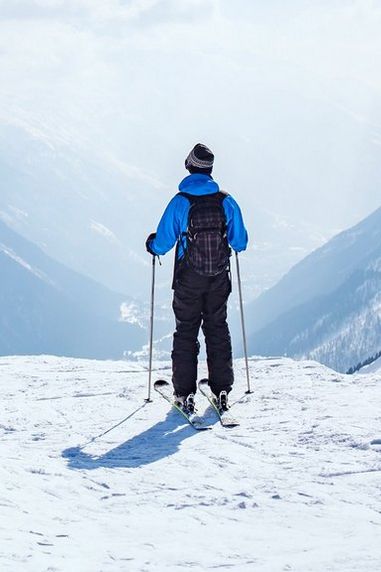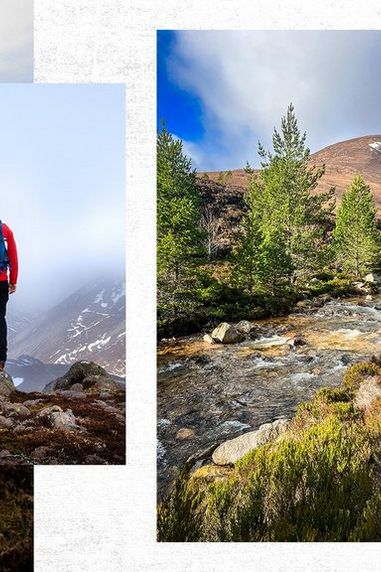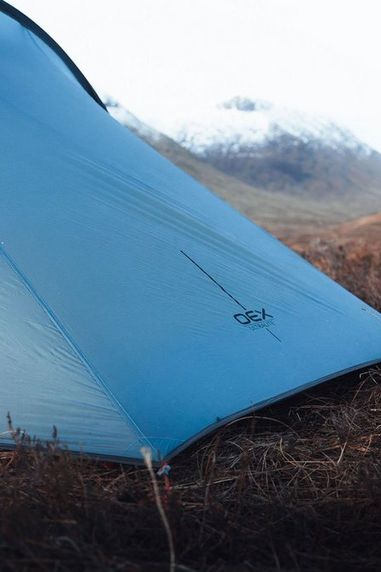
Many believe that there is not much to the humble sock; one pair can be used any way that you like. However this guide will show you that there is a lot more to socks than you might have realised. Wearing the right socks is just as important as any other item of clothing.
Common Sock Styles

The socks that you wear can have a huge impact on your overall comfort and performance outdoors. There are many types of socks available which have been designed to perform during different activities and weather conditions. Wearing the right socks can ensure that you receive the functionality that you require, ensuring that your feet stay warm and comfortable throughout the day.
Here are several of the most common socks available:
Walking/Hiking Socks – activities like hiking and walking can create problems for your feet if you do not wear the correct socks. Walking and hiking socks are designed specifically to cushion your feet, providing support and warmth whilst reducing the chance of blistering in a variety of walking environments and weather conditions. They are usually made from fabrics which draw moisture from the skin to keep you cool outdoors. They also use layered fabrics to maximise comfort and minimise friction on long expeditions.
Trail/Running Socks – like hiking, trail running can be hard on the feet as they have to deal with rough ground, shocks and high levels of moisture/sweat. Trail and running socks are usually made from a combination of stretch and cushioning fabrics which move with the foot and maximise performance by letting your feet breathe. Weight is important in these active socks and they often feature technology which improves support and comfort by minimising movement between the sock and your foot.

Mountaineering Socks – these socks are designed to be worn all year round. They use insulating fabrics to improve heat retention, ensuring that your toes remain warm even in extreme temperatures. These socks are ideal for winter activities and often use super-soft material which is comfortable and cosy. They are usually the thickest, warmest and most cushioned style of socks, designed specifically for dealing with the toughest terrain and the coldest temperatures.
Welly Socks – the Wellington boot has become synonymous with the muddy puddle. In these wet conditions it is important that your feet remain warm and cosy and this is exactly what welly socks offer. They often have a snug fit which ensures that your feet sit well within your boots and they usually extend up to the brim of the boot.
Sock Liners – these baselayers are designed to wick moisture away from the skin and should be worn underneath other socks to provide additional warmth and comfort.
Crew Socks – these socks typically reach the middle of the calf and feature some form of elastic around the top portion which is stretchy. This elastic strip keeps them in place and improves comfort, hence why they are great for outdoor activities and sports.
Our tip
Wearing the right socks during different outdoor activities and weather conditions will help to improve how you maintain the condition of your feet and perform. Outdoor socks enhance the features of your boots to ensure that you receive the maximum amount of comfort and protection possible.
Watch Your Weight – Considering the Weight of Socks

Weight should be considered when choosing a new pair of outdoor socks. It usually correlates with the thickness of the fabrics used within the socks composition and means that a particular weight of sock is designed for a specific weather condition or activity. Here are the three main sock weights:
Lightweight – usually designed for warm climates and simple trails, these socks are thicker than standard sock liners and focus more on comfort than warmth. They can be worn in warm weather conditions without making your feet feel uncomfortable and can be combined with a liner when necessary. They feature lightweight padding in key areas where your feet need it most, providing additional support and comfort.
Midweight – designed to provide a higher level of cushioning, comfort and warmth in moderate to cold climates. Again they can be combined with a sock liner to improve insulation levels and are somewhat thicker than lightweight socks. They feature additional padding in high-impact areas such as the ball and heel of the foot to improve comfort and minimise blistering.
Heavyweight – designed to combat tough terrain and cold temperatures, these socks are often the thickest, warmest and most cushioned. They can be combined with a sock liner for extra insulation in extremely cold conditions and they will fit snuggly within your boots.
Our tip
Your performance during specific weather conditions and outdoor activities can be enhanced by wearing the right weight socks. Each pair of socks is designed to maximise a certain feature such as comfort, warmth or moisture so consider where you will be using them.
Common Materials used in Outdoor Socks

Outdoor socks are made using materials which support and enhance key qualities such as comfort, heat retention and moisture wicking. Many manufacturers combine materials to meet the demand for more versatile, well-rounded socks which can perform dynamically in multiple conditions. Here are the most common materials used in outdoor socks:
Wool – this natural material is commonly used in socks as it retains heat when wet. It is often combined with other synthetic fabrics to improve performance features because on its own it does not dry out easily and can wear out quickly. Despite these issues, Merino wool is used in most socks because it eliminates negative aspects of woollen socks like itchiness.
Synthetic insulating materials – often used in conjunction with wool, these materials increase structure, insulation and are great at wicking moisture. They provide additional abrasion resistance and there is a great variety of material options available.
Silk – extremely lightweight and comfortable, this great insulation material is often mixed with the best lightweight walking socks and liners.
Synthetic wicking materials – popular wicking materials found in liners and wicking socks include COOLMAX® and Polypropylene. These have been designed to enhance wicking performance, keeping you cool and comfortable during activities.
Cotton – on its own this fabric is not great when used outdoors as it absorbs sweat and provides no insulation when wet. This can lead to great discomfort and the chance of blistering, hindering your enjoyment of activities. However, cotton is very comfortable and therefore when combined with wool or man-made fibres can be ideal for lightweight summer walking.
Our tip
It is crucial that you consider what activity you will be doing before you choose a pair of socks to match. Understanding what you want from your socks will help you to find the perfect pair.
Common Features Found in Outdoor Socks

There are several common features found in different styles of socks which again enhance important qualities such as comfort, warmth and protection. These features ensure that you receive exceptional support, allowing you to perform in a variety of different conditions. Common features include:
Layering fabric construction – by layering fabric you combine the features of both materials to create a comfortable and supportive sock. Many sock designs consist of layering materials to maximise movement and reduce rubbing. Usually an inner layer, often made from synthetic is put beneath a warm outer layer such as wool. The inner layer moves with the foot and often wicks away moisture to keep it cool whilst the outer layer moves with the shoe. This simple movement improves performance and ensures that the shoe does not rub on the foot, allowing you to walk freely without feeling pain.
Holding system – often socks feature an ergonomic design which uses heel support padding to keep the heel in place as you move. This greatly reduces friction and wear between layers, minimising the chance of blistering.
Arch brace – an arch brace is usually made up from Lycra® support bands which keep the sock in place on the foot. This supportive brace reduces friction and prevents rotation, providing you with a comfortable fit.
Targeted padding – many socks use targeted padding within their design to cushion vulnerable sections of the foot such as the ball, heel and toe. These parts of the foot are commonly known as high impact zones and therefore require additional support and protection over rough terrain. This protective padding is added by increasing the density of the fabric weave in these vulnerable areas, whilst some even add a longer lasting fabric such as acrylic into the weave.
Odour prevention – maintaining the condition of your foot is an important part of completing any activity. This will reduce the chances of your feet blistering, weakening and becoming sore. Damp, moisture and bacteria often create bad odours which can affect the overall condition of your feet. Many socks use odour prevention fabric technology which eliminates this bacteria and wicks away moisture to keep your feet cool and comfortable.
Layering – experiencing cold feet? Wearing an extra pair of socks can be a simple solution as this will provide additional warmth and comfort when the temperature drops. Sock liners also improve insulation levels and it is good practice to keep a second pair of socks in your rucksack for when you get cold. This is also worth considering when the weather is hot because you will be able to change your socks regularly which will help to maintain the condition of your feet.
Our tip
There are many innovative features that are integral to the design of outdoor socks. These aspects maximise comfort, support, warmth and fit and should be considered to help you choose your perfect pair.




Comments
.?
Sorry that you have had difficulty finding your winter socks for the year. We do stock a 2-pack of Peter Storm Knee-Length Socks - https://www.blacks.co.uk/mens/118563-peter-storm-knee-length-midweight-socks.html
I hope these are what you are looking for. Enjoy your winter outdoors!
Best
Neil@Blacks
I don’t wish to be to criticalu of your product description, as you have been so kind, but the addition of leg lengths would be very useful: Short, mid length and full, under the knee length. Many of the photos gave the appearance of mid calf length, alas. Best wishes, Ron Whiting.
I so pleased I can do business with you again. Best wishes, Ron Whiting.
That is a useful suggestion and one we'll bear in mind when writing up socks in the future. I'm glad you found what you were looking for, and we're delighted to be able to help.
Happy new year from Blacks.
Neil@Blacks